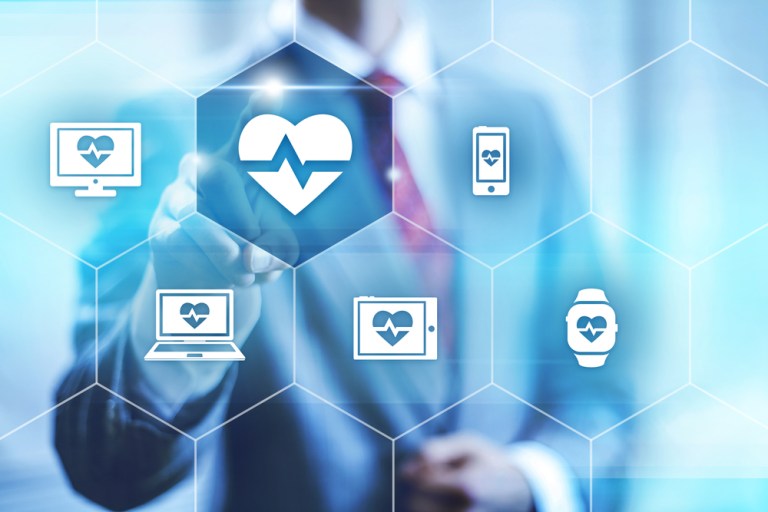In mobile marketplaces like the Apple App Store or the Google Play Store, there are thousands of apps that help track or care for personal health. And by and large, consumers have been big fans of these apps.
According to an estimate from the Food and Drug Administration (FDA), more than 500 million smartphone users are actively using a health care-related application. And, according to the FDA’s projections, more than 1.5 billion smartphone users will have downloaded a mobile health app by 2018.
While these apps may enable users to take better care of their personal health, because they are designed for use by a mass audience, they often lack the personalization and one-on-one experience that health care typically requires.
But Gilad Meiri, founder and CEO of Neura, and his team are working to change that.
This month, the company debuted a new Software-as-a-Service development kit, designed to help medical and health care app builders make their apps more personalized to individual users’ specific medical needs. PYMNTS recently caught up with Meiri to discuss personalization in health care software and how it can help improve outcomes for patients and providers alike.
Keeping patients on track
Advertisement: Scroll to Continue
According to a study from the Centers for Disease Control and Prevention, nearly half of all Americans are currently following a treatment plan or regularly taking prescriptions for chronic illnesses. However, research from the American Heart Association (AHA) indicates that, at least when it comes to pulmonary care and treatment, consumers’ use of medication may not be so regular after all.
The AHA estimated that roughly 75 percent of these patients fail to take their medications as directed by their doctors, which Meiri noted can lead to devastating outcomes. According to a study conducted by Prescriptions for a Healthy America, a partnership of pharmacists and physicians, poor adherence to medical treatment and directions lead to a 17 percent increase in emergency room visits and a 10 percent growth in hospital admissions. Poor prescription and treatment plan adherence also contributes to more 100,000 deaths annually, according to the study.
While there is a wide range of apps that claim to help patients track their treatment and prescription plans, a study in the Journal of Medical Internet Research found that most apps do not do enough to affect a patient’s behavior and would benefit from a more personalized approach to changing human behavior, using proven persuasive principles. As a result, the study concludes these apps do not have a true impact on medical adherence.
Meiri said that Neura’s new software development kit is designed to combat this exact problem. The software adapts to user needs, he explained, monitoring their behavior and using it to help patients follow doctors’ orders more closely and build better, healthier habits.
He noted that the software allows app builders to use this behavioral data to send alerts to users when they are most likely to act on the notification and, as a result, increase adherence to treatment plans and improve health outcomes.
“This is an impactful place for us to be. People who aren’t able to follow their doctor’s prescription plan can significantly compromise their health or preventative care treatment,” Meiri said. “Medication management apps and medical devices enabled by Neura adapt to the user’s day and help the user do what they need to do, right when they need to do it.”
Using location and biometrics to learn
Neura learns when to remind users to take prescriptions or engage in treatment by finding out more about a patient’s behavior and patterns, Meiri said.
The service uses artificial intelligence and machine learning to discover what a user does in the real world, by tracking movements along with biometric indicators, similar to devices like fitness trackers. However, Meiri said that he and his team have improved on popular wearable devices that measure whether a user is taking part in a healthy activity — like working out — based on data from technological devices. This includes information from devices like accelerometers, which measures how fast a person is moving and can determine if they are going for a jog or bike ride, or a heart rate monitor, which can tell if a user’s heart is working harder than normal.
But these indicators have a major flaw, Meiri said.
“Right now, most apps and devices can tell you if you are doing something but not why you are doing it,” he said. “They cannot determine if you’re moving faster and your heart rate is increasing because you’re going for a jog and working out or if it’s because you’re running to catch the train or catch the bus. So, they don’t know if you’re really engaging in a healthy activity or just doing something as a result of circumstance.”
The software works to combine multiple data streams that can be collected by a smartphone app or a wearable medical device to learn about a user’s daily activity, such as when they typically wake up or go to sleep, leave for work and return home, where and what they eat, and when they typically work out.
Meiri explained that, over time, devices and apps that use Neura’s software can determine, for example, when a patient arrives at the gym or another location where they typically work out or exercise.
The software can then be used for reminders like prompting a diabetic to check his or her glucose levels before working out, increasing the odds that a user will follow through with treatment.
Personalization potential
While there is clearly a need for personalization in medical and health care apps, Meiri said that he believes this technology can be used in a wide range of verticals.
He explained that, because his team’s software can learn about a user’s behavior and location, it can use that data to send a host of different notifications to users, depending on where they are at a particular time of day. And that can have positive outcomes for both consumers and app developers.
“Users engage with the app more fully and use it more consistently and frequently and have a higher satisfaction with the app,” Meiri said. “That grows revenues for the app or device provider.”
With benefits for consumers, providers and developers, keep an eye on increased personalization coming to health care apps, now and in the near future.
To download the February edition of the PYMNTS.com Developer Tracker™, click the button below…

About The Tracker
The PYMNTS.com Developer Tracker™, powered by Vantiv, provides the payments ecosystem with a view into how software developers are using new technologies to create innovative business opportunities and enable merchants to optimize the ways in which they engage with shoppers today. The developer community within the Tracker is separated into three categories: Shopping and Payments, Operations and Marketing.




